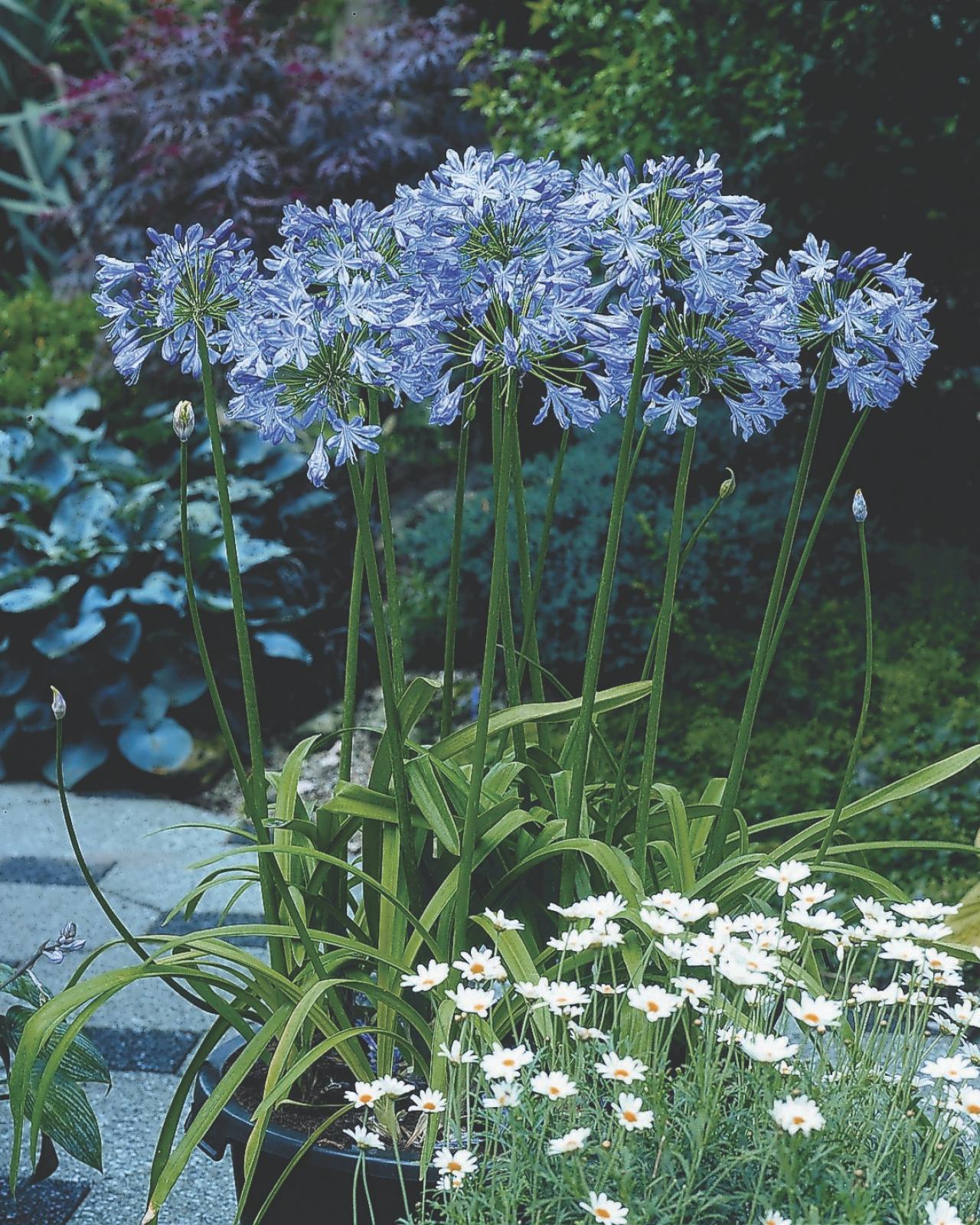Magnificent Agapanthus: Enhancing Your Garden's Elegance
Magnificent Agapanthus: Enhancing Your Garden's Elegance
Blog Article
Mastering the Art of Agapanthus Treatment: Vital Actions for Healthy And Balanced Development and Vivid Blooms
In the world of cultivation, the farming of agapanthus stands as a fulfilling endeavor for those who seek to support these classy flowering plants. With their striking blossoms and elegant foliage, agapanthus has actually recorded the interest of garden enthusiasts worldwide. Nonetheless, accomplishing optimal growth and dynamic blossoms needs a nuanced approach that encompasses various vital actions. From choosing the best selection to understanding trimming strategies, the journey towards growing flourishing agapanthus plants is multifaceted and holds the essential to unlocking the full potential of these herb treasures.

Choosing the Right Agapanthus Variety

When choosing the best Agapanthus selection for your yard, take into consideration elements such as environment viability, flower color, and growth behavior. Agapanthus, frequently called Lily of the Nile or African lily, is available in a variety of colors varying from shades of purple and blue to white. Pick a bloom color that complements your existing yard scheme to develop an unified landscape. Furthermore, take into consideration the environment in your area to ensure the Agapanthus selection you choose can grow in your details problems. Some ranges are extra forgiving of cold temperatures, while others choose warmer climates. Understanding the development habit of different Agapanthus selections is vital for appropriate positioning within your yard. Some selections have a clumping growth practice, ideal for borders or containers, while others have a more spreading nature, ideal for ground cover or mass growings. By very carefully reviewing these elements, you can choose the best Agapanthus range to boost the beauty of your yard.
Ideal Growing Conditions
Thinking about the optimal environmental needs is essential for successful Agapanthus farming. Agapanthus plants are delicate to chilly temperatures and ought to be safeguarded from frost throughout winter season months.
To make sure healthy growth and vibrant blossoms, plant Agapanthus light bulbs at a deepness of about 2-4 inches and space them 8-12 inches apart. Mulching around the base of the plants assists maintain wetness and subdues weed development.
Watering and Fertilizing Tips
Preserving appropriate moisture degrees and offering important nutrients are vital elements in the care routine for Agapanthus plants. When it comes to sprinkling Agapanthus, it is important to strike a balance. These plants like consistently moist dirt yet are at risk to root rot if overwatered.
Feeding Agapanthus is vital for advertising healthy and balanced growth and respected blossoms. Apply a balanced fertilizer, such as a 10-10-10 formula, in the early spring as brand-new growth emerges. By adhering to these watering and fertilizing pointers, you can guarantee your Agapanthus plants grow and produce dynamic, long-lasting flowers.
Trimming Methods for Agapanthus
Trimming Agapanthus plants at the proper times and with proper strategies is crucial for keeping their health and promoting optimal growth and flowering. The excellent time to trim Agapanthus remains in late winter or very early spring prior to brand-new growth emerges. Beginning by eliminating any type of dead or yellowing fallen leaves near the base of the plant. Cut them as close to the ground as feasible without damaging the emerging shoots.
Deadheading spent flowers can also redirect the plant's power into generating more blooms instead than setting seeds. If you want to accumulate seeds for breeding, leave some flowers to dry and fully grown on the plant.
Bear in mind to utilize tidy, sharp devices to make precise cuts and minimize the danger of introducing diseases. Agapanthus. Normal trimming will help keep your Agapanthus looking healthy and balanced and neat while ensuring a websites plentiful display of stunning blossoms
Managing Typical Insects and Diseases
After making sure correct pruning strategies for Agapanthus, it is essential to deal with usual bugs and illness that can influence the health and wellness and vigor of these plants. One common bug that impacts Agapanthus is the Agapanthus gall midge.
One more common issue is fungal leaf spot, which offers as dark sores on the fallen leaves. To avoid fungal conditions, make sure good air flow around the plants, stay clear of overhanging watering, and get rid of any infected leaves immediately. Additionally, Agapanthus plants can struggle with root rot if click resources they are planted in improperly draining dirt. To stop this, plant Agapanthus in well-draining Visit Website dirt and stay clear of overwatering. By being alert and taking prompt activity against conditions and bugs, you can help your Agapanthus plants prosper and create dynamic flowers.

Verdict
To conclude, grasping the art of agapanthus care entails picking the right variety, offering perfect growing conditions, proper watering and feeding, ideal pruning strategies, and dealing with common pests and conditions. By following these vital steps, you can make sure healthy and balanced growth and vivid blooms for your agapanthus plants. Remember to routinely keep track of and preserve your plants to advertise their overall wellness and long life.
To guarantee healthy development and dynamic blooms, plant Agapanthus bulbs at a deepness of regarding 2-4 inches and space them 8-12 inches apart. By adhering to these watering and fertilizing suggestions, you can ensure your Agapanthus plants thrive and create dynamic, resilient blossoms.
One common pest that influences Agapanthus is the Agapanthus gall midget. Furthermore, Agapanthus plants can suffer from origin rot if they are planted in poorly draining dirt. By complying with these important actions, you can ensure healthy development and lively blooms for your agapanthus plants.
Report this page